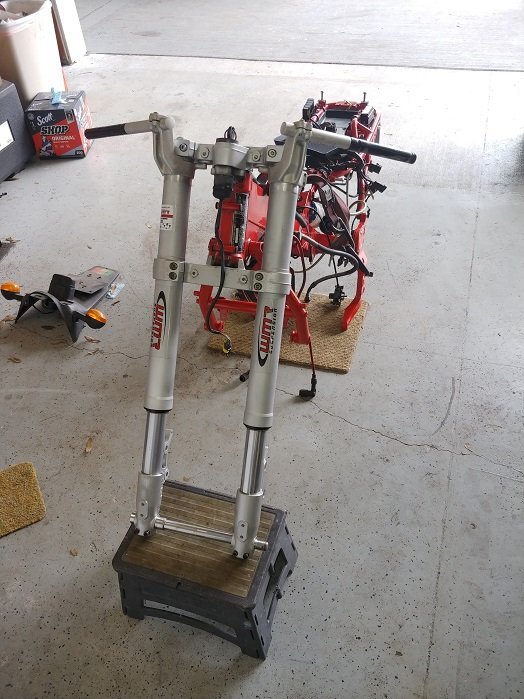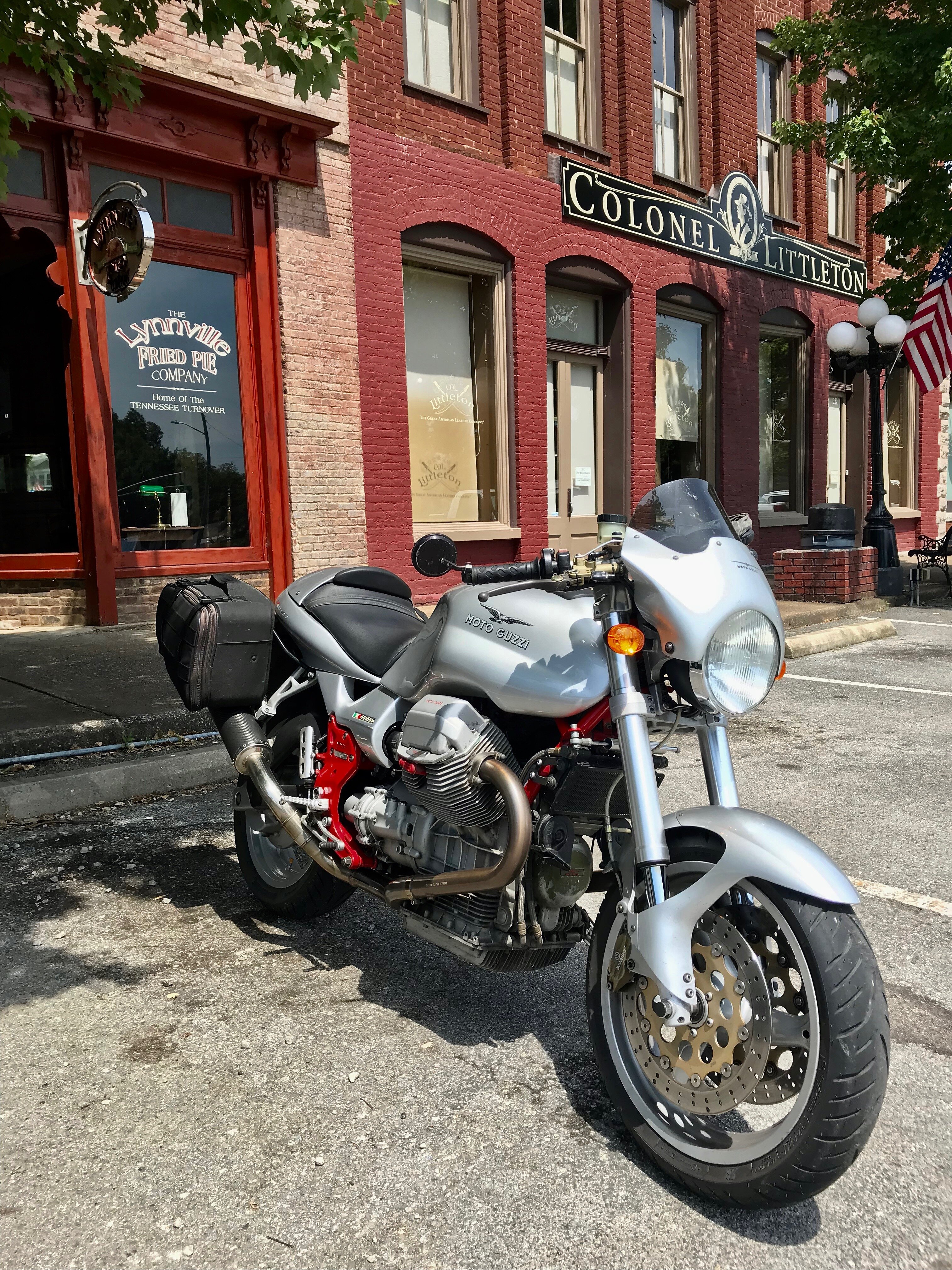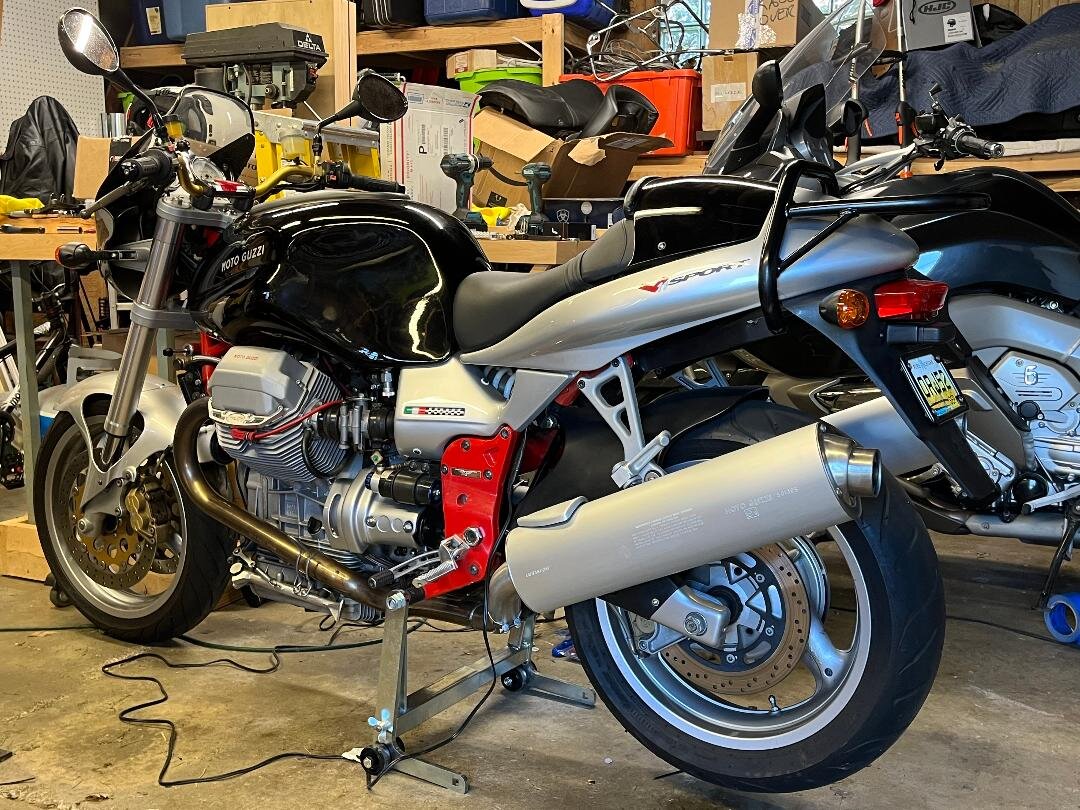-
Posts
20,496 -
Joined
-
Last visited
-
Days Won
1,189
Content Type
Profiles
Forums
Events
Gallery
Community Map
Posts posted by docc
-
-
I cannot find an image of the earlier bolt, but pretty sure the only change was the finish from the earlier, black phosphate-looking bolts to the later, silver "Geomet corrosion resistant finish " . . .
Certainly, this is group of fasteners that would be unfortunate not to be torqued correctly a.k.a. "tight " . . .
-
 2
2
-
-
The only torque spec in the Workshop Manual for 10mm is 1.5 thread pitch in the English and Dutch translations, but 1.25 in the German translation. Guess we'll go with the two-out-of-three consensus.

The part number does change between the early Sports (GU98623530) and the LeMans (GU98683530 )
Here is a listing for the later number:
I don't see a size change across the V11 range, @phalford. For sure your caliper mount bolts measure 8mm?
-
31 minutes ago, Pressureangle said:
My 2000 has 10mm caliper bolts.
Thanks for checking! What's that thread pitch?
-
6 minutes ago, Scud said:
I believe torque specs are based on thread size to avoid confusion with various bolt head types (eg. hex-head vs socket cap). So you would need a thread gauge tool, not a caliper.
True. Torque spec based on both fastener diameter and thread pitch, yes?
I don't think I have a loose caliper bolt lying around to measure. Anyone?
-
2 hours ago, phalford said:
I should just check what size your caliper bracket mount bolts are. DOCC says they are 10mm (therefore 45-50 Nm), but mine are 8mm (therefore 25-30 Nm) - My MG is a 2004 LeMans.
I was going by the Parts Catalog washer size for 1999-2001. Can anyone get a caliper on the actual bolts? @Pressureangle?
-
On 9/14/2025 at 7:09 PM, docc said:
4) at "some rpm" - in this case: what happens to charging voltage as the rpm rises from, say, 2500 to 4000
On 9/15/2025 at 8:03 AM, Sam P said:4)12.3v
This outcome does not support the "overcharging" scenario:
> Not charging <
-
 2
2
-
-
Perhaps it could be valuable to specify that the reference voltage comes from Relay #2. Sure, that supplies the headlight but also the brake light, horns, tachometer, power to the "warning lights" (including the battery light), as well as the reference voltage to the regulator.
-
 1
1
-
-
7 minutes ago, Lucky Phil said:
I remember that BMW's use the charging indicator light as part of the charging regulation system. If the charge light bulb burns out then you get nothing out of the alternator. Left me stranded on the side of the road in the Isle of Mann in 1984. Not sure if it's applicable to the V11 system though.
Phil
I don't think so (for our V11).
Yet, issues with this connector (indicator light and reference voltage) or its course of wiring/ connections might involve both the light behavior and the actual charging fault . . .

I had to seal mine at some point . . .

-
 2
2
-
-
3 minutes ago, Pressureangle said:
Well, mine needs paint and has clipons.
Dang, bud. This needs more than "paint."
 Jus' sayin' . . .
Jus' sayin' . . . 

-
 2
2
-
-
8 minutes ago, Pressureangle said:
Woah! @deadpen69's V11 Sport TT . . .

-
 1
1
-
-
I don't think it was Aprilia that moved MGNA from NC, but Piaggio (who moved operations to New York, IIRC).
-
 2
2
-
-
56 minutes ago, Sam P said:
AC volts coming from the alternator just now are 24v at idle and 60v revved at 3K rpm. So, it would appear that the regulator is getting power from the alternator, perhaps too much power (see my OP.)
Not sure if the the 12.3v DC at the battery with the engine running is what it is supposed to be. Waiting to hear from @docc on this from a few posts ago.
Maybe there is an issue with the butt connectors from the yellow stator wires (output) to the yellow (input) regulator wires? Not sure how to troubleshoot that....
Ah, yes, that system is not charging at the battery at all. It should be 13.8-14.2vDC at some rpm, idle somewhat lower, but not that low.
Those yellow alternator connectors do benefit from a clean, tighten, and seal. Some folks eliminate the connectors and hard wire there to eliminate that potential trouble spot.
Still a mystery why there is no battery light KOEO. I am still suspecting an open connection somewhere: across the 30 fuse or an errant ring terminal that got left off either the positive or negative battery terminal.
Also, cannot rule out a faulty new part (R/R). There's a name for that . . .
-
 3
3
-
-
48 minutes ago, footgoose said:
Proper hydration cures a lot of ailments, as does beer.


-
 4
4
-
 1
1
-
 1
1
-
-
Back to the basics:
What is the DC voltage, across the battery terminals:
1) Key off , after a few hours
2) Key on, engine off (KOEO)
3) Engine running, at "idle" (idle rpm can vary widely between our selections: 600 rpm to 1500 rpm)
4) at "some rpm" - in this case: what happens to charging voltage as the rpm rises from, say, 2500 to 4000 . . .
-
1 minute ago, audiomick said:
Do you think so? I'm doubtful. I think we need a photo with the cover off.

Yes, indeed . . .
-
 1
1
-
-
Again, more confirmation through our good man, @v11_meticcio, with images and reference to the origins of our V11 motor from the SALA MOTORI (engine room) of the Moto Guzzi museo in Mandello . . .


-
 2
2
-
 2
2
-
-
-
13 minutes ago, Pressureangle said:
Was that tightening or loosening? Looks like you might still have a bit sticking above the gasket surface.
Makes a big difference on the extraction opportunities . . .
-
 1
1
-
-
The best methodology for putting Titanio canisters, grey Ballabio frame sideplates, and Rosso Mandello valve covers on your LeMans is to buy all those V11, rearrange the parts to your liking and keep them all.



Seriously, let's ask the other inmates on the ward if that sounds crazy.



-
 2
2
-
 1
1
-
 5
5
-
-
I love the Spine Frame exhibit . . . " Per Volare "


-
1 hour ago, Pressureangle said:
If anyone has a good 2000-2001 schematic, particularly in English (Did KiwiRoy do this?) I'd like to see it.
Yeah, man: Carl Allison ( @callison ), also archived on thisoldtractor under "Resources":
https://www.thisoldtractor.com/guzzi007/sportissimo.html
https://www.thisoldtractor.com/guzzi007/pdfs/1999_V11_sport.pdf
@Weegie has also archived content in his dropbox:
-
 2
2
-
-
A dab about the size of a worn pencil eraser, a couple times a day. Rubs right in, no burn - no smell.
Accept no substitutes, get the "S" product . . .
https://www.apohealth.de/en/products/traumeel-s-creme-50-g-creme-1288865

-
 2
2
-
-
Let's specify the alternator output voltage is AC. Not sure it makes any difference to the discussion, but the voltmeter must be set AC for the alternator output and DC for the Regulator/Rectifier output.
Also, isn't the V11 alternator some kind of induction device (no brushes) with the crank spinning coils of wire within a permanent magnet?

-
 2
2
-
-
If I recall the lore correctly, that faring was the last outcome from the iconic Mandello wind tunnel.


-
 4
4
-
 1
1
-




2000 Redframe on deck
in 24/7 V11
Posted
Don't let the metal blanking plate/ disc jump out of your angle drives. Perhaps made more likely by adding viscous lubricant to the housing . . .